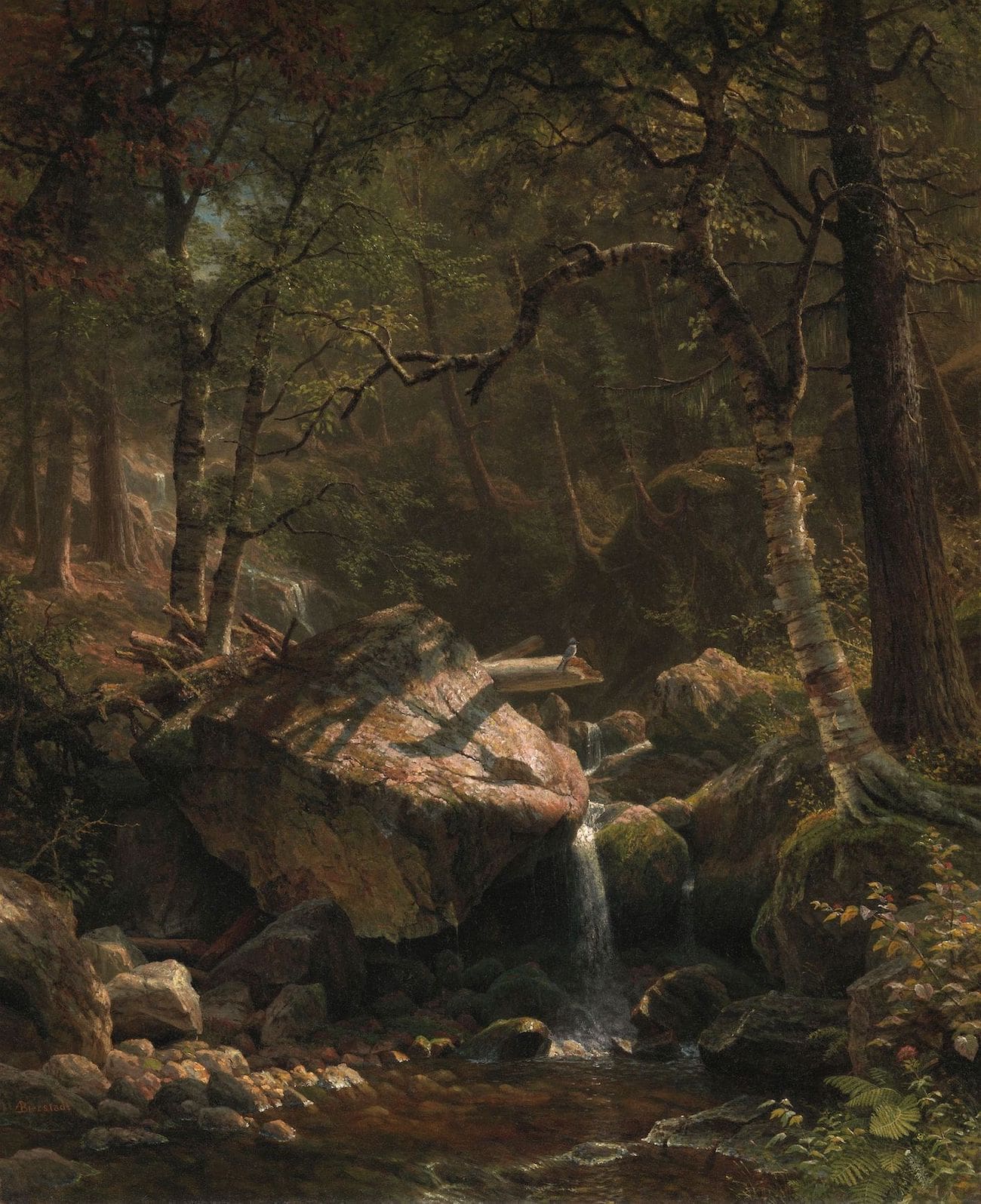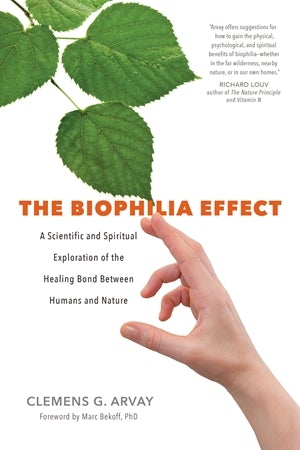Therapy
Forest Therapy: Description, Benefits, and Effectiveness
THC Editorial Team April 2, 2022

Contents
- Overview
- What Is Forest Therapy?
- What Is the History of Forest Therapy?
- How Does Forest Therapy Work?
- Potential Benefits of Forest Therapy
- Effectiveness of Forest Therapy
- Summary
For centuries, professionals from many fields and backgrounds have extolled the benefits of spending time in nature. Some even believe that separation from nature in modern times is the cause of many physical, psychological, and emotional ailments.1 Research has shown that the stressors found in city environments, like high noise levels, crime rates, and pollution levels, can harm physical and mental health.2 Conversely, interacting with nature can reduce symptoms of depression and other mental health conditions and increase overall mental well-being. Forest therapy harnesses the power of nature to promote relaxation and encourage psychological and physiological health.3
What Is Forest Therapy?
Forest therapy is an outdoor, guided healing practice. It is also referred to as nature therapy, forest bathing, and shinrin-yoku.4 This practice focuses on mindfully immersing oneself in nature by using all five senses to experience the environment. It can be used to help prevent disease and emotional imbalance; to treat various mental health-related conditions, like depression and anxiety; and even to improve aspects of physical health, like immune and respiratory function.5
Forest therapy is meant to promote physiological relaxation and reductions in stress states. Exposing the senses to stimuli found in nature can increase parasympathetic nervous system function and increase mindful awareness to allow relaxation.5
What Is the History of Forest Therapy?
Though forest therapy is a relatively new concept, developed within the last 50 years, perspectives on the healing power of nature have been around for centuries. Twenty-five hundred years ago, Cyrus the Great, of Persia, included green garden spaces in his urban capital cities to foster health and calm in citizens. In the 16th century, Swiss-German physician Paracelsus proclaimed the power of nature in healing even over that of medical professionals like himself.5 Even before modern medical research could show the healing provided by nature, people were able to feel and see it.
Modern forest therapy was first developed in 1982. The Japanese Forestry Agency spearheaded the founding of this therapeutic method. It has become commonplace in Japan and South Korea, both of which have published scientific literature examining and displaying the benefits of forest therapy. Although many know and feel the therapeutic benefits of being in nature, this practice is still catching on in the rest of the world.2
How Does Forest Therapy Work?
Forest therapy is a dynamic practice; though the theoretical basis generally remains the same, there is no singular way to practice it.6 Three general principles help guide forest therapy practices. First, someone practicing forest therapy must go into nature to connect with their environment for healing. This includes engaging all the senses and a state of presence and focus in the landscape. Though it may involve physical exercise, this is not the primary purpose of the practice. It is about being in nature, not getting to a destination.6
Mindfulness is another requirement of forest therapy. Guides can cultivate mindfulness in clients by providing prompts to slow down and deeply perceive the natural environment.
Finally, forest therapy is about developing a meaningful, long-term relationship with nature; returning to the forest can deepen this relationship. Practitioners can consider it a practice akin to yoga, or other mindful meditative movement practices. People can cultivate routines outside of the forest environment to further their relationship with nature and continue the health benefits this practice provides. These practices can include learning about nature, engaging their active imagination, expressing themselves creatively, and interacting with natural elements like animals, trees, and rivers.6
Forest therapy works by helping to decrease cortisol, the stress hormone, in the body. Long-term stress can lead to chronically elevated cortisol levels, which can cause a slew of physiological issues, including high blood pressure, heart disease, and headaches.4 Spending time in the natural environment can help stimulate the parasympathetic nervous system, which reduces stress and calms the stress response of the sympathetic nervous system.5
Additionally, trees exude essential oils referred to as phytoncides. Some research has shown that these phytoncides can promote immune system function. Phytoncides can also help reduce anxiety and depression symptoms, improve sleep quality, and decrease inflammation.4
… forest therapy is about developing a meaningful, long-term relationship with nature; returning to the forest can deepen this relationship.
Potential Benefits of Forest Therapy
Researchers have found that forest therapy can produce many benefits, including:
- decreased stress levels5
- fewer complaints regarding health5
- better overall well-being5
- better nervous system function5
- reduced psychological distress5
- reduced feelings of hostility5
- reduced anxiety and depression symptoms5
- enhanced quality of life5
- reduced chronic pain5
- increased spiritual and emotional health5
- decreased heart rate and blood pressure5
- decreased overall negative feelings7
- better creative performance2
- increased feelings of self-worth2
- improved ability to cope with life conflicts2
- reduced burnout
- reduced impulsivity and aggression8
- increased attention8
- better working memory capacity8
- faster recovery after operations8
Because forest therapy promotes physiological and psychological relaxation, it can treat a wide variety of conditions. As mentioned earlier, forest therapy stimulates the parasympathetic nervous system, which promotes destressing and relaxation.2 This can help reduce insomnia, clinical depression, and high blood pressure.5 Resultant reductions in blood pressure and heart rate can help improve cardiovascular health and reduce deaths from cardiovascular disease and chronic obstructive pulmonary disease (COPD). Forest therapy can also treat diabetes; it has shown effectiveness in reducing blood glucose levels by stimulating insulin production.2
Effectiveness of Forest Therapy
Research has shown that forest therapy can be an extremely effective treatment for many conditions. A 2017 study from Chiba University and the Forestry and Forest Products Research Institute in Japan considered the effect of forest therapy tourism (tourism or rural or forested areas) on relaxation in 43 office workers from major Japanese cities. After undergoing the forest therapy intervention, the participants had reduced systolic blood pressure and improved subjective feelings. The relaxation effects lasted three to five days after the intervention.9
Another article published in 2017, written by researchers from Seoul National University in Korea, analyzed studies that evaluated the effectiveness of forest therapy in treating depression. The studies mainly used self-report questionnaires such as the Profile of Mood States and the Beck Depression Inventory to assess the interventions’ effectiveness. The studies’ interventions ranged from 1 day to 12 weeks. Most interventions included walking in the forest, and some also included forest viewing and experiencing through the five senses, forest meditation, aromatherapy, and craftwork. All studies among people with depression or other conditions concluded that forest therapy resulted in reduced levels of depression in participants.10 According to other researchers, forest therapy can even, in some cases, be more effective than therapy conducted in hospitals or non-forested urban areas.11
A 2015 study by researchers from Inje University in Seoul, Korea, examined whether forest therapy would reduce the stress of 211 women who worked in health care and counseling service fields. They used questionnaire data and metrics on natural killer cell activity, cortisol concentration, and heart rate variability and found that the forest therapy program reduced psychosocial stress in participants.12
Various studies have shown that forest therapy can be an effective intervention to promote cardiovascular health. A 2014 study conducted by a team of researchers from Japan, Korea, and Finland used questionnaires and measurements of heart rate, heart rate variability, and blood pressure in 48 men to determine whether walking in a forest or urban environment would affect cardiovascular reactivity. They found that walking in the forest environment facilitated the parasympathetic nervous system and suppressed the sympathetic nervous system to promote cardiovascular relaxation.13 Another study conducted the following year in Japan by medical and environmental researchers found that nine men from 40 to 72 years old also benefitted from forest therapy. The researchers found that after the 275-minute guided interaction with the forest environment, the participants’ blood pressure, urinary adrenaline, and serum cortisol had decreased.14
Summary
In an increasingly urban and technology-based world, it is more important than ever to spend time reconnecting with nature. Forest therapy can provide a guided method for mindfully spending time in nature. Even a single session can garner results, though professionals recommend repeated interactions with nature for the most beneficial outcomes. Those interested in trying forest therapy can look for a therapist using the Association of Nature & Forest Therapy’s “Find a Guide” directory.


















